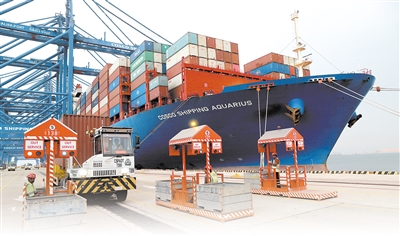The Silk Road Of Ancient And Modern
The Silk Road Of Ancient And Modern
The Silk Road of Ancient and Modern: A bridge of exchange that travels through a thousand years. In the long river of world history, there is a route that is known as the "golden channel connecting the East and the West" - that is the Silk Road. It is not only a trade route, but also a bridge of cultural exchanges
The Silk Road of Ancient and Modern: A Bridge of Exchanges that Traveled Through Thousand Years
In the long river of world history, there is a route that is known as the "golden channel connecting the East and the West" - that is the Silk Road. It is not only a trade route, but also a bridge of cultural exchanges and a chapter of common memory of mankind. From ancient prosperity to modern cooperation, the spirit of the Silk Road still inspires today's international cooperation and cultural exchanges.
1. The Origin and Prosperity of the Silk Road
The origin of the Silk Road can be traced back to around the 2nd century BC. During the Han Dynasty, Zhang Qian went to the Western Regions and opened up the connection between the East and the West. Initially, the route was mainly for trading precious commodities such as silk, spices, gemstones and ceramics, but over time it gradually evolved into a diversified communication platform.
This route travels across Asia, West Asia, Europe, across deserts, mountains, grasslands, connecting many civilizations in China, India, Persia, the Arabian Peninsula, the Mediterranean coast and even Europe. The ancient Silk Road not only brought about the prosperity of goods, but also promoted the exchange of religion, science and technology and culture. For example, Buddhism was introduced to China from India, Islamic culture flourished in Central Asia, and the four great inventions of ancient China, such as papermaking, gunpowder, and compass, were also spread throughout the world through this route.
2. The cultural charm of the ancient Silk Road
The Silk Road is not only a trade channel, but also a place where cultures blend. The various civilizations along the route meet, collide and merge here, giving birth to a colorful cultural landscape.
For example, cities on the Silk Road, such as Samarkand, Kashgar, and Isfahan, are all the intersections of Eastern and Western cultures. The buildings of these cities combine Persian, Islamic, Han and other styles, showing the charm of multiculturalism. Artworks, religious beliefs, customs and habits are exchanged and integrated here to form a unique cultural landscape.
In addition, the Silk Road has promoted the dissemination of art forms such as literature, music, and dance. For example, the musical elements of Central Asia influenced Chinese folk music, and Persian poetry was widely circulated in the Islamic world, forming a rich cultural heritage.

3. Modern "Silk Road": a bridge connecting the future
With the advancement of globalization, the spirit of the ancient Silk Road has been given new meaning. In 2013, China proposed the "Silk Road Economic Belt" and "21st Century Maritime Silk Road" initiatives, referred to as the "Silk Road Economic Belt" and the "21st Century Maritime Silk Road", collectively known as the "Belt and Road".
This initiative aims to reshape the glory of the ancient Silk Road through infrastructure construction, trade cooperation and cultural exchanges. Today, from China-Europe freight trains to maritime routes, from transnational expressways to energy pipelines, the "Belt and Road" has become an important economic link connecting Asia, Africa and Europe.
Not only that, the modern Silk Road also emphasizes cultural exchanges and people's hearts. Through cultural festivals, academic exchanges and tourism cooperation, all countries enhance understanding and friendship and promote common development.
4. The spiritual enlightenment of the Silk Road
The core spirit of the Silk Road of Ancient and Modern lies in "win-win cooperation, peaceful coexistence, and mutual learning in culture." In today's world, this spirit still has important practical significance in the face of a complex and changing international situation.
It reminds us that cooperation can bring lasting prosperity more than confrontation; understanding and inclusion can promote peace more than exclusion; and cultural exchanges are the driving force that drives human civilization to move forward. Just as the ancient Silk Road connected different civilizations, the modern "Belt and Road" also hopes to become a bridge between different countries and different cultures.
V. Conclusion
The Silk Roads of ancient and modern times have witnessed the integration and development of human civilization. From the busy business and travel in ancient times to the win-win cooperation in modern times, it always symbolizes the power of connection and communication. In the future, this path that spans thousands of years will continue to inspire us to move forward hand in hand to create a more prosperous, peaceful and inclusive world.
Let us remember this brilliant history, inherit and carry forward the spirit of the Silk Road, and let the bridges of ancient and modern times connect the future forever!





